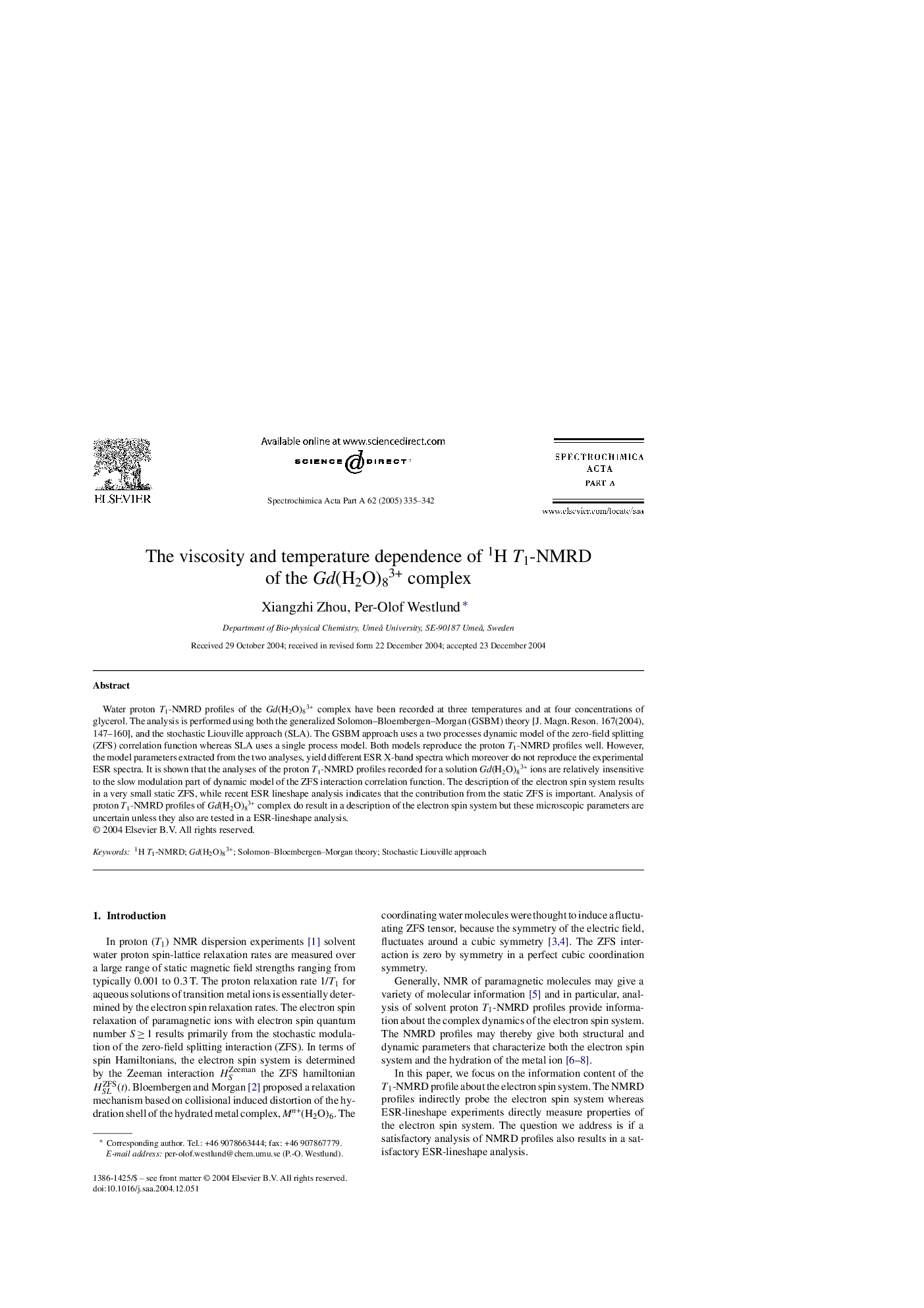| Article ID | Journal | Published Year | Pages | File Type |
|---|---|---|---|---|
| 9757031 | Spectrochimica Acta Part A: Molecular and Biomolecular Spectroscopy | 2005 | 8 Pages |
Abstract
Water proton T1-NMRD profiles of the Gd(H2O)83+ complex have been recorded at three temperatures and at four concentrations of glycerol. The analysis is performed using both the generalized Solomon-Bloembergen-Morgan (GSBM) theory [J. Magn. Reson. 167(2004), 147-160], and the stochastic Liouville approach (SLA). The GSBM approach uses a two processes dynamic model of the zero-field splitting (ZFS) correlation function whereas SLA uses a single process model. Both models reproduce the proton T1-NMRD profiles well. However, the model parameters extracted from the two analyses, yield different ESR X-band spectra which moreover do not reproduce the experimental ESR spectra. It is shown that the analyses of the proton T1-NMRD profiles recorded for a solution Gd(H2O)83+ ions are relatively insensitive to the slow modulation part of dynamic model of the ZFS interaction correlation function. The description of the electron spin system results in a very small static ZFS, while recent ESR lineshape analysis indicates that the contribution from the static ZFS is important. Analysis of proton T1-NMRD profiles of Gd(H2O)83+ complex do result in a description of the electron spin system but these microscopic parameters are uncertain unless they also are tested in a ESR-lineshape analysis.
Related Topics
Physical Sciences and Engineering
Chemistry
Analytical Chemistry
Authors
Xiangzhi Zhou, Per-Olof Westlund,
